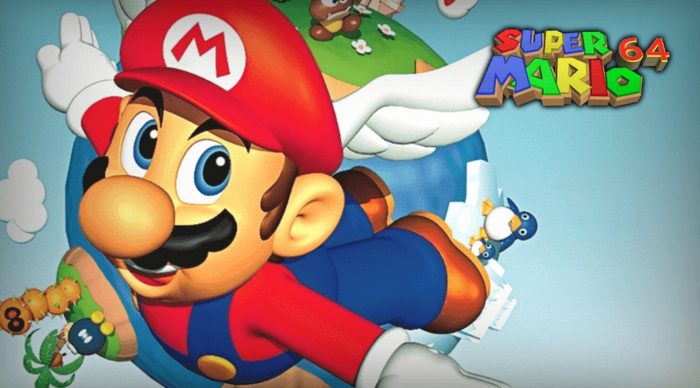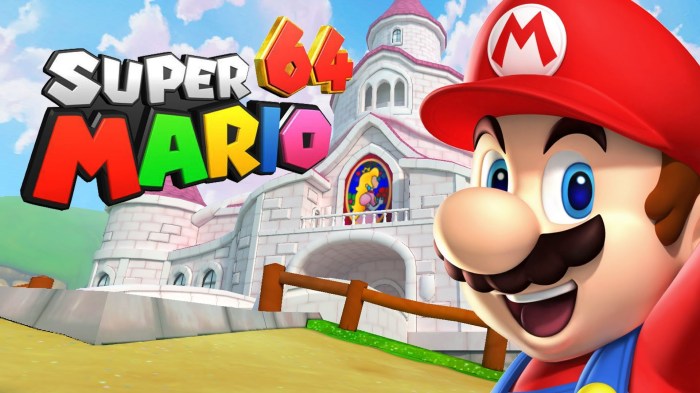Super Mario 64 emulation has revolutionized the way we experience classic Nintendo 64 games. By harnessing the power of modern hardware, emulators allow us to relive cherished memories and explore the iconic worlds of Super Mario 64 in unprecedented ways.
From the groundbreaking graphics and innovative gameplay to the challenges of multiplayer emulation, this guide delves into the fascinating world of Super Mario 64 emulation, providing insights, tips, and recommendations for an optimal gaming experience.
Nintendo 64 Emulation: Super Mario 64 Emulation
Emulation is the act of running software or hardware from one system on a different system. In the context of video games, emulation allows players to experience games from older consoles on modern hardware. Nintendo 64 emulation has been a popular topic for decades, as the console’s groundbreaking graphics and innovative gameplay still resonate with gamers today.
Emulation History and Development

The history of video game emulation dates back to the early days of personal computers. In the 1970s, enthusiasts began developing emulators for classic arcade games, allowing them to be played on home computers. As technology advanced, emulation expanded to more complex systems, including the Nintendo 64.
Emulating the Nintendo 64 is a challenging task due to the console’s unique hardware architecture. The N64 used a custom-designed 64-bit processor and a Reality Co-Processor (RCP) to handle graphics. Emulators must accurately replicate these components in software to run N64 games.
Over the years, several popular Nintendo 64 emulators have been developed, including Project64, Mupen64, and BizHawk. These emulators offer a range of features, including support for high-resolution graphics, save states, and cheat codes.
Graphics and Performance Optimization

The Nintendo 64 was known for its impressive graphics capabilities. Emulators must replicate these capabilities to provide a faithful gaming experience. To achieve this, emulators use a variety of techniques, including:
- Software rendering: Emulators can use software to render graphics, which provides accurate but slower performance.
- Hardware rendering: Emulators can use modern graphics cards to accelerate rendering, providing faster performance but potentially introducing visual artifacts.
- Shader emulation: Emulators can emulate the N64’s custom shaders to enhance graphics quality.
In addition to graphics, emulators must also optimize performance to run games smoothly on modern hardware. This can be achieved through techniques such as:
- Just-in-time (JIT) compilation: Emulators can translate N64 code into native machine code on the fly, improving performance.
- Dynamic recompiler: Emulators can dynamically recompile N64 code as it is executed, further improving performance.
- Multithreading: Emulators can use multiple CPU cores to distribute the workload, improving performance.
Input and Control Options
The Nintendo 64 used a unique controller with an analog stick and four shoulder buttons. Emulators must support a variety of input devices, including modern gamepads, keyboards, and even the original N64 controller.
Mapping N64 controls to modern controllers can be challenging due to the different button layouts. Emulators typically provide customizable control schemes to allow players to tailor their experience.
Multiplayer and Online Play
Many Nintendo 64 games supported multiplayer modes. Emulators must support multiplayer over a network to allow players to compete or cooperate with each other.
Emulating multiplayer over a network can be challenging due to latency and bandwidth issues. Emulators typically use a variety of techniques to minimize latency and provide a smooth multiplayer experience.
Several emulators support online multiplayer, allowing players to connect with each other over the internet. This feature has greatly expanded the multiplayer capabilities of N64 games.
Compatibility and Game Enhancements, Super mario 64 emulation

Not all Nintendo 64 games are fully compatible with emulators. Some games may exhibit graphical glitches, sound issues, or other problems.
Emulators can also enhance games with features not available on the original console. These features may include:
- Cheat codes: Emulators can allow players to enter cheat codes to modify gameplay.
- Save states: Emulators can allow players to save their game at any point, even in the middle of a level.
- Texture packs: Emulators can allow players to replace the original game textures with higher-resolution versions.
Expert Answers
What are the best emulators for Super Mario 64?
Some popular emulators for Super Mario 64 include Project64, Mupen64Plus, and RetroArch.
Can I play Super Mario 64 online with friends?
Yes, some emulators such as RetroArch and Kaillera support online multiplayer for Super Mario 64.
How can I improve the graphics quality of Super Mario 64 in emulators?
Many emulators offer graphics enhancement options such as texture filtering, anti-aliasing, and widescreen support.
